Titan Aka The Mermaid Moon
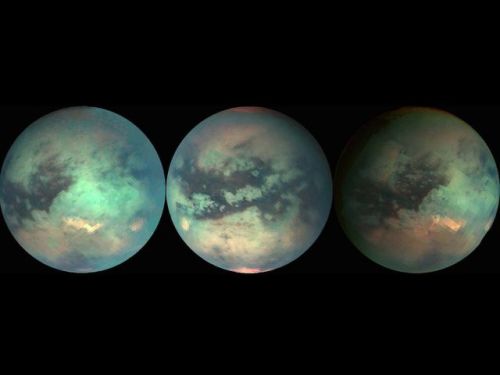
Titan aka the Mermaid Moon
More Posts from Outofambit and Others
It gave Kit an annoyed look. “All right, so I’m ambivalent,” the Lone One said. “But isn’t ambivalence preferable to pure evil?” Kit considered that one for a moment. “See? You’re buying it already,” the Lone One said. “I was getting bored with absolute evil, anyway. I find that you can do lots more damage with ambivalence. … "People are eager to excuse it, though. Ambivalence is seen as a sign of maturity, wheras actually taking a stance on one side or another is easy to describe as simplistic. Or unsophisticated. Or juvenile."
-Wizard’s Holiday by Diane Duane
[yells to the heavens] THIS IS WHY I LOVE YA LIIIIIT
(via trailofdesire)
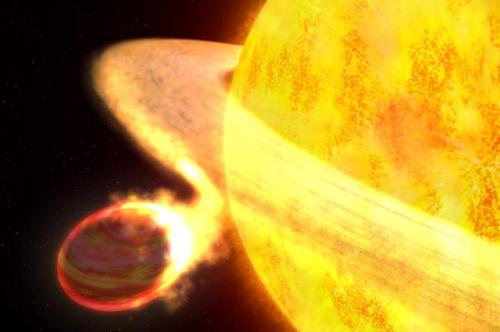
Most Amazing Exoplanets
The term ‘exoplanet’ applies to any planet outside of our solar system. At last count, we have identified 3,538.
Out of the thousands of planets we know about, some of them are incredibly bizarre compared to what we are used to seeing in our own solar system. Here are some exoplanets with very unique characteristics:
Kepler-78b
The most astounding fact about Kepler-78b is that it shouldn’t even exist, according to our current knowledge of planetary formation. It is extremely close to its star at only 550,000 miles (900,000 kilometers). As a comparison, Mercury only gets within 28.5 million miles (45.9 million kilometers) of the sun in the nearest point of orbit. With that proximity, it isn’t clear how the planet could have formed as the star was much larger when the planet formed. With its current distance, that would mean it formed inside the star, which is impossible as far as we know.
The planet itself is only slightly larger than Earth, though surface conditions are markedly different. The temperature on the surface is estimated to be 4300° F (2400° C), which is nearly nine times as hot as the temperature on Venus. Unfortunately for Kepler-78b, it is likely that the star’s gravitational pull will gradually bring the star closer and totally consume it in the next 3 billion years.
WASP-12b
While Kepler-78b still has about 3 billion more years before getting consumed by its star, the process is well underway for WASP-12b. This exoplanet is actively getting pulled apart by its parent star, much to the delight of astronomers who can watch the process unfold. So much material has been pulled away from the planet, it has been pulled into an oblong football shape. Astronomers have estimated that WASP-12b has about 10 million more years until it is completely pulled apart by the star.
The planet is described as a “hot Jupiter” as it is a gas planet that is about 40 percent larger than Jupiter. It is currently so close to its star that it only takes 1.1 Earth days for the planet to complete a full orbit. The star, WASP-12, is G-type main sequence star, just like our own sun. It is located about 800 lightyears away in the Auriga constellation.
TrES-2b
TrES-2b has been dubbed the “dark planet” because it does not reflect light. If we were able to view it directly, it would likely just look like a coal-black ball of gas. At 1800°F (1000°C) the planet is way too hot for clouds, which would help reflect the star’s light. The red tinges are areas of superheated gas. Other darker planets only reflect about 10% of the star’s light, but TrES-2b only reflects about 1%, making it the darkest planet ever discovered.
Why is TrES-2b so dark? Scientists aren’t quite sure. Right now, the best guess is that the majority of the planet’s composition is something like sodium or potassium which absorbs light. This dark world is located about 750 lightyears away in the Draco constellation.
HD 189773b
HD 189773b is pretty exciting. It is relatively close, at only 63 lightyears away. It is also the first planet to have its color determined and it turned out to be a pretty blue planet, just like Earth. Unlike Earth, however, HD 189773b is a gas giant with a temperature that reaches a sweltering 1800°F (1000°C). The weather gets more extreme, because intense pressure and temperature turns silicate particles in the atmosphere into glass, which then rains down. As if that doesn’t sound dangerous enough, the winds have been estimated to gust at 4,000 mph (7,000 km/h) which really whips those glass particles around.
55 Cancri e
55 Cancri e is twice the size of Earth but is nearly 8 times more massive and twice as dense. Last fall, researchers deduced that the mass of the planet was largely carbon. Due to the pressure and surface temperature of 4892°F (2700°C) it very well could have formed diamond. It is so close to its parent star it takes a mere 18 hours for the planet to complete a full orbit.
55 Cancri e is only about 40 light-years away from us in the Cancer constellation. The parent star is much more carbon than our own sun, so it might be too surprising that planet e is also carbon-rich. From there, it isn’t much of a stretch to assume that the other four known planets in the system would also have a high carbon content.
Because of these extreme conditions, astronomers don’t believe that 55 Cancri e has an atmosphere, making it a poor candidate for the possibility for life. However, it is close enough for astronomers to use it to test hypotheses about planetary formation.
PSR B1620-26b
Nicknamed “Methuselah,” PSR B1620-26b is the oldest known exoplanet. The planetary system formed approximately 12.7 billion years ago, when the Milky Way galaxy was in its infancy. It is located in the Scorpius constellation about 12,400 lightyears away.
Methuselah orbits binary stars and goes around them in a circumbinary orbit. As if Methuselah’s age isn’t interesting enough, the fact that it orbits two mismatched dead stars is quite unusual. One of the stars is a pulsar and the other is a white dwarf. Since Methuselah is found in a dense star cluster, astronomers initially thought it could be a star as well, and would be considered a brown dwarf. Measurements from the Hubble would confirm that Methuselah is a planet, and it remains the oldest one we’ve ever discovered.
TrES-4
Located 1,400 lightyears away in the Hercules constellation, TrES-4 is the largest exoplanet we have discovered so far. Though it is over 1.7 times the size of Jupiter, it has an extremely low density and is categorized as a “puffy” planet. The planet’s density is about the same as cork, which came as quite a shock. Astronomers attribute this to extreme heat of 2,300° F (1,260° C) due to is proximity to the star. At only 4.5 million miles (7.2 million kilometers) away from its sun, TrES-4 is able to complete an orbit in three Earth days.
Gliese 436 b
30 lightyears away in the constellation Leo, Gliese 436 b is a planet that is about as massive as Neptune. The planet also happens to be covered in burning ice - though the ice isn’t anything like what we’re used to. The extreme pressure of the planet forces the water to stay in solid form, even though the temperature exceeds 570° F (300° C). The outer layer of the solid water is superheated and comes off as vapor. Water has over 10 solid states, not including common ice.
In its present position, the water would not have been able to condense down into a solid, indicating that it migrated toward its sun after it formed.
I had to do a "home budget" project in econ during high school, and we had to "buy a car" as part of our budget planning and so I used a listing for one of these as my "purchase" because I am nothing if not a massive nerd. It still delights me to think about. ^__^
I'm desperately trying to look for the specific model of Lotus that you referenced in the first of the Young Wizard series. I've been wanting to draw a storyboard for a long while for it and for some reason Google is useless.
It's this one: the Lotus Turbo Esprit. Lovely, lovely thing that it was...

(Sorry, the YouTube video seems to have failed to insert correctly. But check it out: https://youtu.be/CQnOusKNDKs)
...Later in the eighties they softened its lines down. But this is the one that made me stop and stare when I passed by the Lotus showroom in Manhattan in ‘81...
Young Wizards is my favorite book series because where else are you going to find a book where a twelve year old, an alien elf prince, a talking tree, and a crystal centipede all get together to do surgery on the sun.
IM NOT FLAILING ARE YOU FLAILING!?!?
DD's ten favorite lines from "Games Wizards Play"
10: “I’d prefer it to rain chocolate frosted donuts in my kitchen on Sunday mornings, but I don’t seem to be getting a lot of that.”
9: “Look, we’re all in The Sims.”
8: “But I’m on your side this time.”
7: “Wizardry is mean to me. I’m gonna tell.”
6: “Just don’t blame me if now she lives long enough to reproduce.”
5: “We’re using such different dictionaries.”
4: “It can probably be seen from space, but don’t let that bother you.”
3: “You may continue to stand in my presence.”
2: "That worked.”
1: "It made my day."
The funny thing about comparing the young wizards books to Harry Potter is that not only did they come way before Harry Potter, not only is the prose massively more competent, not only does the author have morals she holds to - to the point of rewriting the entire ending of one of her books when she was told it was harmful, but she also outlasted the whole Harry Potter phenomenon and is still putting out new books that are actually good in the series. Literally a flawless victory on every front.

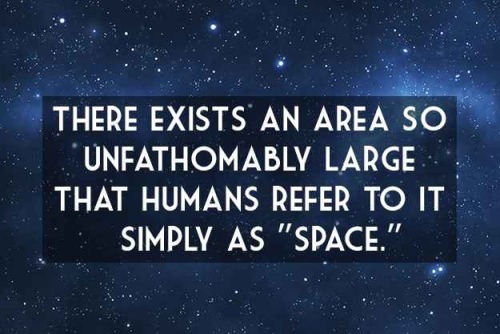



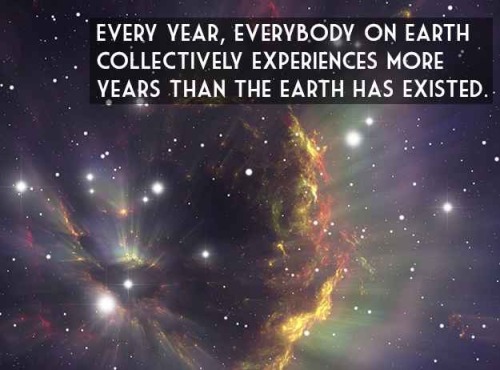
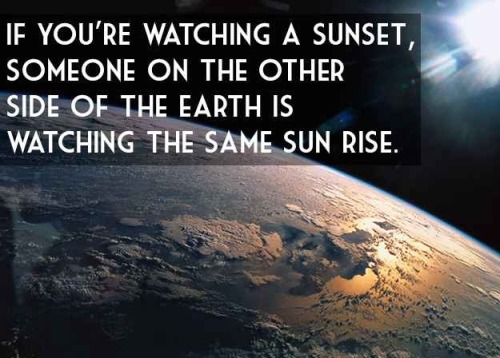
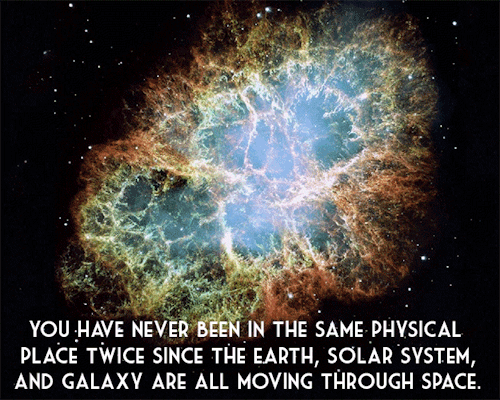
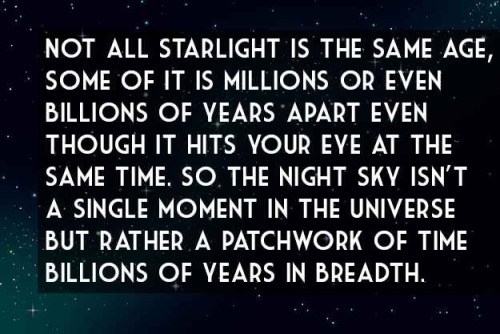
9 things to seriously make you re-consider the entire existence of mankind
Source: buzzfeed.com
‘fairest and fallen, greetings and defiance’ is still the best Stock Greeting For Our Ancient Enemy ever. it’s got everything. (1) you’re hot (2) you’re evil (3) respect tho (4) anyway i’m here to kick your ass
What Have We Learned About Pluto?
This month (March 2016), in the journal Science, New Horizons scientists have authored the first comprehensive set of papers describing results from last summer’s Pluto system flyby. These detailed papers completely transform our view of Pluto and reveal the former “astronomer’s planet” to be a real world with diverse and active geology, exotic surface chemistry, a complex atmosphere, puzzling interaction with the sun and an intriguing system of small moons.
Here’s a breakdown of what we’ve learned about Pluto:

1. Pluto has been geologically active throughout the past 4 billion years. The age-dating of Pluto’s surface through crater counts has revealed that Pluto has been geologically active throughout the past 4 billion years. Further, the surface of Pluto’s informally-named Sputnik Planum, a massive ice plain larger than Texas, is devoid of any detectable craters and estimated to be geologically young – no more than 10 million years old.

2. Pluto’s moon Charon has been discovered to have an ancient surface. As an example, the great expanse of smooth plains on Charon is likely a vast cryovolcanic flow or flows that erupted onto Charon’s surface about 4 billion years ago. These flows are likely related to the freezing of an internal ocean that globally ruptured Charon’s crust.

3. Pluto’s surface has many types of terrain. The distribution of compositional units on Pluto’s surface – from nitrogen-rich, to methane-rich, to water-rich – has been found to be surprisingly complex, creating puzzles for understanding Pluto’s climate and geologic history. The variations in surface composition on Pluto are unprecedented elsewhere in the outer solar system.

4. Pluto’s atmosphere is colder than we thought. Pluto’s upper atmospheric temperature has been found to be much colder (by about 70 degrees Fahrenheit) than had been thought from Earth-based studies, with important implications for its atmospheric escape rate. Why the atmosphere is colder is a mystery.

5. We know what Pluto’s atmosphere is made of. The New Horizon spacecraft made observations of sunlight passing through Pluto’s atmosphere. We see absorption features that indicate an atmosphere made up of nitrogen (like Earth’s) with methane, acetylene and ethylene as minor constituents.

6. We might have an idea for how Pluto’s haze formed. For first time, a plausible mechanism for forming Pluto’s atmospheric haze layers has been found. This mechanism involves the concentration of haze particles by atmospheric buoyancy waves, created by winds blowing over Pluto’s mountainous topography. Pluto’s haze extends hundreds of kilometers into space, and embedded within it are over 20 very thin, but far brighter, layers.

7. There isn’t much dust around Pluto. Before the flyby, there was concern that a small piece of debris (even the size of a grain of sand) could cause great damage to (or even destroy) the spacecraft. But the Venetia Burney Student Dust Counter (an instrument on the New Horizons spacecraft) only counted a single dust particle within five days of the flyby. This is similar to the density of dust particles in free space in the outer solar system – about 6 particles per cubic mile – showing that the region around Pluto is, in fact, not filled with debris.

8. Pluto’s atmosphere is smaller than we expected. The uppermost region of Pluto’s atmosphere is slowly escaping to space. The hotter the upper atmosphere, the more rapid the gasses escape. The lower the planet’s mass, the lower the gravity, and the faster the atmospheric loss. As molecules escape, they are ionized by solar ultraviolet light. Once ionized, the charged molecules are carried away by the solar wind. As more Pluto-genic material is picked up by the solar wind, the more the solar wind is slowed down and deflected around Pluto. So - the net result is a region (the interaction region), which is like a blunt cone pointed toward the sun, where the escaping ionized gasses interact with the solar wind. The cone extends to a distance about 6 Pluto radii from Pluto toward the sun, but extend behind Pluto at least 400 Pluto radii behind Pluto - like a wake behind the dwarf planet.

9. Pluto’s moons are brighter than we thought. The high albedos (reflectiveness) of Pluto’s small satellites (moons) – about 50 to 80 percent – are entirely different from the much lower reflectiveness of the small bodies in the general Kuiper Belt population, which range from about 5 to 20 percent. This difference lends further support to the idea that these moons were not captured from the general Kuiper Belt population, but instead formed by the collection of material produced in the aftermath of the giant collision that created the entire Pluto satellite system.
Make sure to follow us on Tumblr for your regular dose of space: http://nasa.tumblr.com
This is awful. I just looked it up and Koi fish can live more than 200 years, the oldest on record being Hanako Fish who died at age 226.
Tom and Carl will die before them.
-
 cernunnos1990 liked this · 2 weeks ago
cernunnos1990 liked this · 2 weeks ago -
 z-ponpoko-z liked this · 3 weeks ago
z-ponpoko-z liked this · 3 weeks ago -
 belloitaliano1 liked this · 3 weeks ago
belloitaliano1 liked this · 3 weeks ago -
 lcc-ldv liked this · 3 weeks ago
lcc-ldv liked this · 3 weeks ago -
 always-dreamin reblogged this · 3 weeks ago
always-dreamin reblogged this · 3 weeks ago -
 just46 liked this · 3 weeks ago
just46 liked this · 3 weeks ago -
 lux-tenebrae liked this · 3 weeks ago
lux-tenebrae liked this · 3 weeks ago -
 always-dreamin liked this · 3 weeks ago
always-dreamin liked this · 3 weeks ago -
 kocyigitcag liked this · 3 weeks ago
kocyigitcag liked this · 3 weeks ago -
 kikisloane reblogged this · 3 weeks ago
kikisloane reblogged this · 3 weeks ago -
 batsinmypants liked this · 3 weeks ago
batsinmypants liked this · 3 weeks ago -
 semutamusic liked this · 3 weeks ago
semutamusic liked this · 3 weeks ago -
 mountainstackedwithfear reblogged this · 3 weeks ago
mountainstackedwithfear reblogged this · 3 weeks ago -
 silentgraceandpoise reblogged this · 3 weeks ago
silentgraceandpoise reblogged this · 3 weeks ago -
 steviedegrae liked this · 3 weeks ago
steviedegrae liked this · 3 weeks ago -
 kikisloane liked this · 3 weeks ago
kikisloane liked this · 3 weeks ago -
 silentgraceandpoise liked this · 3 weeks ago
silentgraceandpoise liked this · 3 weeks ago -
 daughterofappalachia reblogged this · 3 weeks ago
daughterofappalachia reblogged this · 3 weeks ago -
 soulswantmore2 liked this · 3 weeks ago
soulswantmore2 liked this · 3 weeks ago -
 warrior-woman-slays reblogged this · 3 weeks ago
warrior-woman-slays reblogged this · 3 weeks ago -
 naptimepng reblogged this · 1 month ago
naptimepng reblogged this · 1 month ago -
 naptimepng liked this · 1 month ago
naptimepng liked this · 1 month ago -
 perfectlyimproper reblogged this · 2 months ago
perfectlyimproper reblogged this · 2 months ago -
 virosavena reblogged this · 2 months ago
virosavena reblogged this · 2 months ago -
 hoodiepandaninja16 liked this · 2 months ago
hoodiepandaninja16 liked this · 2 months ago -
 johnfriedkennedy reblogged this · 2 months ago
johnfriedkennedy reblogged this · 2 months ago -
 dindjarinsgf reblogged this · 2 months ago
dindjarinsgf reblogged this · 2 months ago -
 lazarusladylazarus reblogged this · 3 months ago
lazarusladylazarus reblogged this · 3 months ago -
 dirtymantou reblogged this · 3 months ago
dirtymantou reblogged this · 3 months ago -
 m4natea liked this · 3 months ago
m4natea liked this · 3 months ago -
 catboycrimsonrain liked this · 3 months ago
catboycrimsonrain liked this · 3 months ago -
 dragonji liked this · 3 months ago
dragonji liked this · 3 months ago -
 ocdhuacheng reblogged this · 3 months ago
ocdhuacheng reblogged this · 3 months ago -
 violets-and-petrichor liked this · 3 months ago
violets-and-petrichor liked this · 3 months ago -
 space-stegosaurus reblogged this · 3 months ago
space-stegosaurus reblogged this · 3 months ago -
 space-stegosaurus liked this · 3 months ago
space-stegosaurus liked this · 3 months ago -
 bewds reblogged this · 3 months ago
bewds reblogged this · 3 months ago -
 bewds liked this · 3 months ago
bewds liked this · 3 months ago -
 gimmemorespirk liked this · 3 months ago
gimmemorespirk liked this · 3 months ago -
 rococokara reblogged this · 3 months ago
rococokara reblogged this · 3 months ago -
 oldhollywoodpangurban reblogged this · 3 months ago
oldhollywoodpangurban reblogged this · 3 months ago -
 impulsive-astrophile liked this · 3 months ago
impulsive-astrophile liked this · 3 months ago -
 pywren reblogged this · 3 months ago
pywren reblogged this · 3 months ago -
 magdalenepotentia liked this · 4 months ago
magdalenepotentia liked this · 4 months ago -
 azari-31 liked this · 4 months ago
azari-31 liked this · 4 months ago -
 flowerfemmes reblogged this · 4 months ago
flowerfemmes reblogged this · 4 months ago
A personal temporospatial claudication for Young Wizards fandom-related posts and general space nonsense.
288 posts